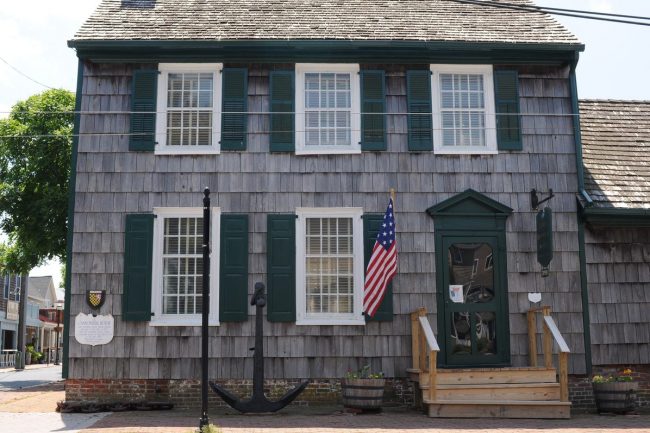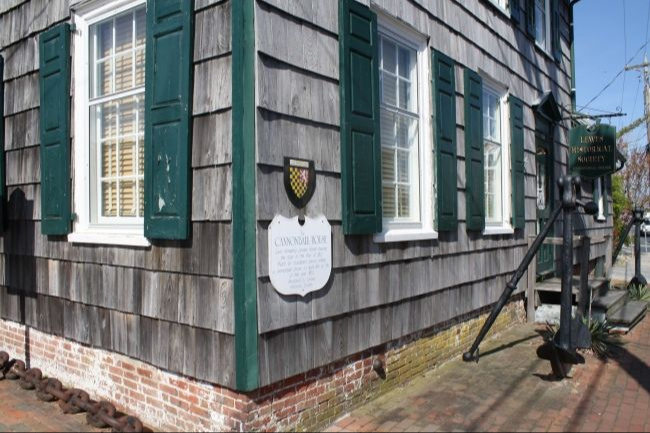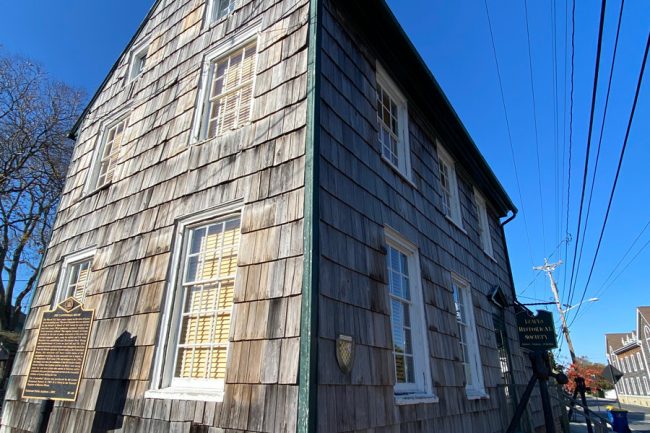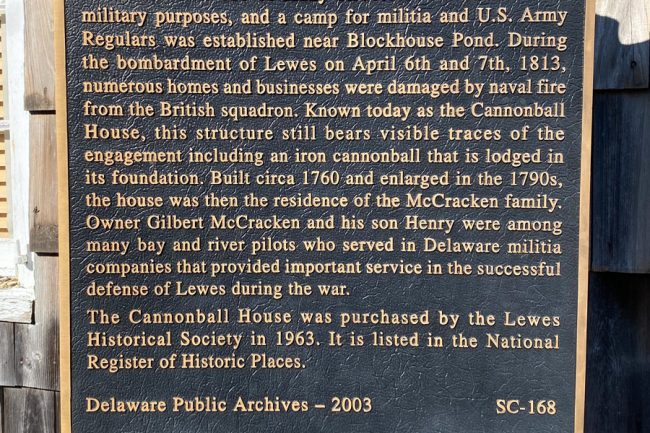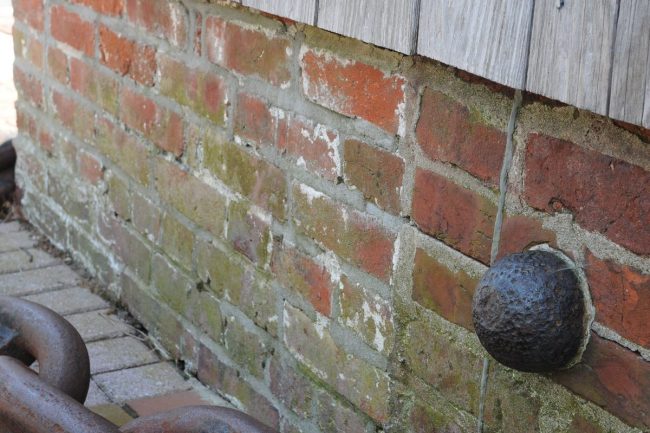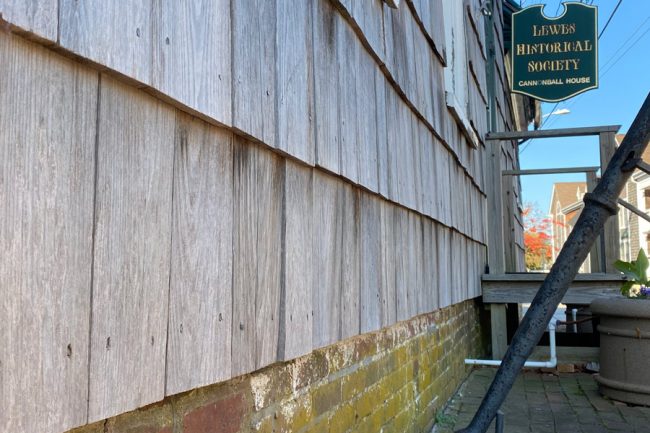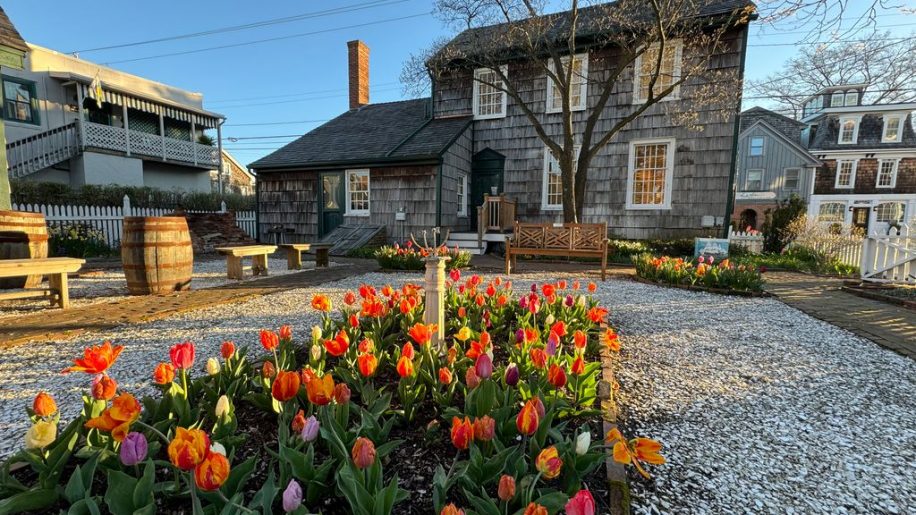
In a town full of amazing historic buildings, the Cannonball House is among Lewes’ most beloved. Dating to the middle years of the 18th-century, the structure’s cypress- and cedar-shingled walls have witnessed centuries of Delaware history unfold. Most famously, the Cannonball House is the only surviving structure in Lewes to have been damaged during the Bombardment of Lewes during the War of 1812, when the British Royal Navy opened fire on the town’s small forts for some 22 hours, striking this Lewes landmark in the process. Throughout its long life, it has served as a home, sewing notions shop, bank, city offices, printing shop, laundromat, the Lewes Service Station, and as Joe’s Taxi Stand.
Historic Lewes acquired this storied home in 1963, preserving it and transforming it into a Maritime Museum, commemorating our community’s deep connection to the waters of the Atlantic and Bay and River Delaware. Inside, you’ll find exhibits exploring this rich heritage, including: Breaking Britannia’s Grasp, unfolding the story of the infamous War of 1812 Bombardment; The Wireless – Lewes & the Dawn of the Electronic Age, using a working telegraph set to share Lewes’ role in the development of electronic technology in the early 1900s; and an exploration of navigation on the Bay and River Delaware, honoring pilots, lighthouses, and life-savers.
Please Note: the Cannonball House recently received a thorough evaluation by the Historic American Buildings Survey (HABS) Heritage Documentation Program. This program is provided by the National Parks Service, United States Department of the Interior, and will guide our ongoing restoration of this incredible piece of Lewes history.
